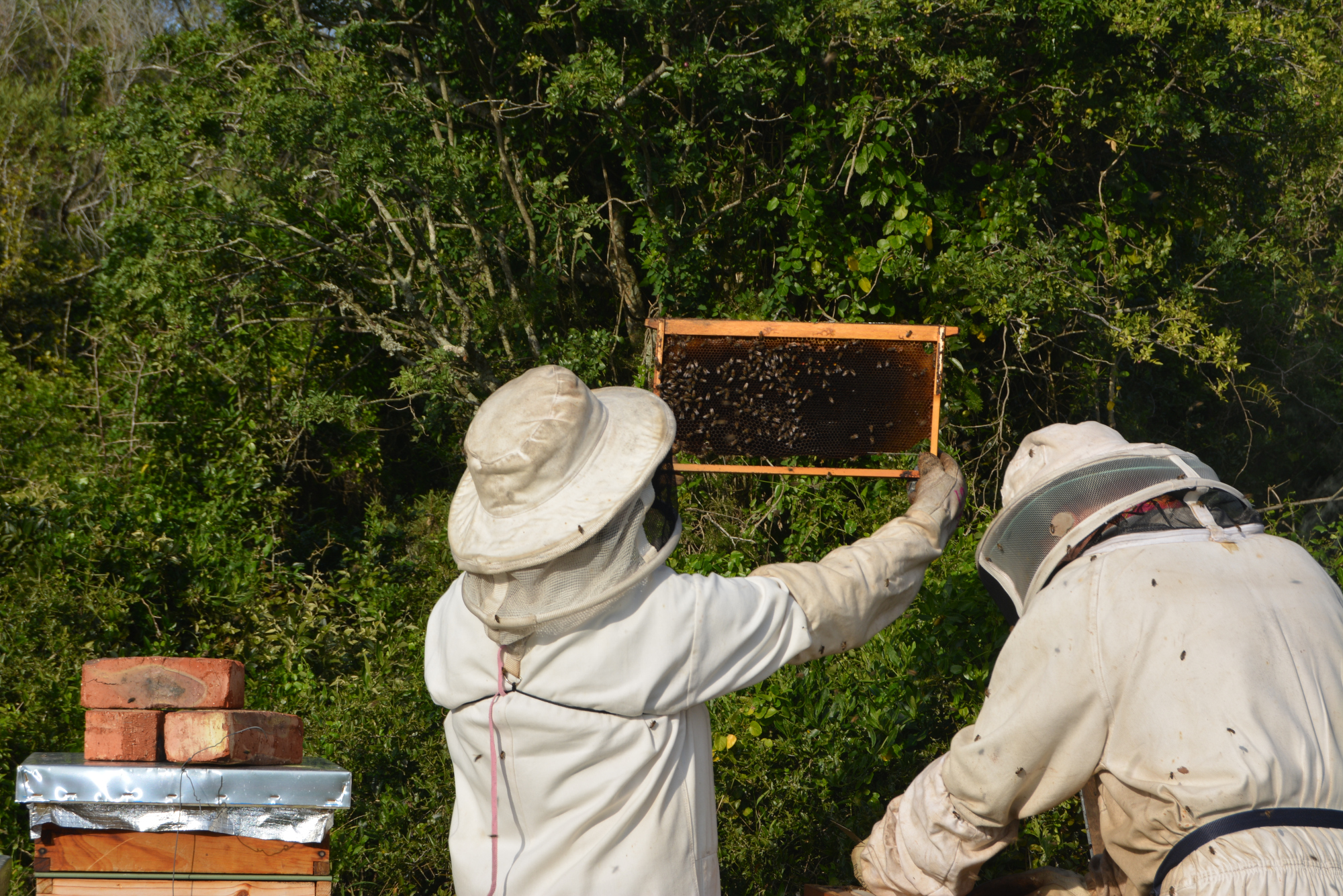The beehives established at Sardinia Bay Golf & Wildlife Estate are thriving after their first season and the resident bees are poised to make a noticeable difference to the ecological balance of the development.
This is the view of beekeeper Sue Hoffmann, who was instrumental in pushing for the hives to be placed in a secluded bushy area on the coastal estate just outside Gqeberha’s suburbs.
Hoffmann says they currently have 13 hives in operation with each healthy one being home to around 30 000 bees.
“For a long time, we had a catch box in the estate to attract swarms, but nothing happened,” she says.
“So I had a meeting with the trustees of the Homeowners’ Association and pushed for a project to relocate some swarms to the development at an appropriate spot we chose with the help of estate manager Hugh Wiblin.
She says the bees have done a fantastic job in pollinating the flora as they should do in a natural environment, which was good for the gardens and properties.
“Personally, I think the gardens have improved and I believe residents will definitely notice the difference over time.”

Hoffman says the swarms have quickly become comfortable in their surroundings, particularly with the north-facing set-up which allows them to warm up and become productive earlier in the day.
“They have produced more than we expected at the last yield because normally it takes a full season for a swarm to get strong and to establish themselves,” she explains.
“They have done very well and adjusted quickly. For no obvious reason it has been an incredible season for bees, which became apparent from the notes which were posted on a beekeeping WhatsApp group.
“It’s possibly because there has been a lot of rain, even if not in the catchment areas, and that helps the bees to thrive.
“With more people taking up beekeeping, there will be more bees and they also naturally swarm themselves. If you have one hive, it will eventually expand to enough for two and then three.”
She adds that they have space for an additional seven.
The hives, which are situated safely away from residential areas, have been placed on stands for several reasons.
“One of these is snakes,” says Hoffmann. “The surprise of finding them in a warm spot under the hives is real!
“Also, it’s a back-breaking job when you are lifting the boxes.”
In addition, the higher they are from the ground the safer they are from honey badgers.
“On one occasion a honey badger got among the hives – we could see its footprints – and managed to move the lid sideways,” she says.
“Because the swarm flew away, we replaced it with another swarm. But, interestingly, the original swarm returned a while later.
“They hovered around the area and we eventually realised that they were very comfortable there and had returned to nurture their home again. The swarm did however later move off.”
The area has been secured with fences and signs to prevent human intervention and the hives have been wired up to prevent honey badgers from getting inside.
One of the fringe benefits is the production of honey, which needs to be redistributed. Each hive can yield between 15 and 25kg per year.
Contact me please
“The idea from the HOA is to bottle it and sell it at the golf club, but that will possibly happen from next year,” says Hoffmann.
“So, at this stage, we will take the honey and then provide the HOA with the equivalent amount when it is ready to place it at the club for purchase.”
In terms of safety, Hoffman says there is no danger to residents.
“Apart from the signs to warn anyone walking in the area, the hives are situated well away from the houses and, if we are not working here, it’s perfectly safe for the residents to walk past.
“It’s important though that nobody interferes with the bees because if they become harassed, then there could be a problem.
“For instance, we don’t do any cutting of grass near the hives and they also don’t like chemical smells, so we try to keep this area as natural as possible.”
